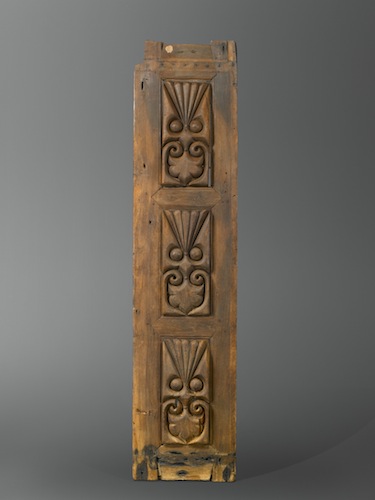Artistic Handcraft - A wing of a door in the Palace of the Caliph at Samarra
Dar Al-Khalifa or Jawsaq Al-Khaqani,
Origin and time: Iraq, AD 836
Louvre, Paris
The Abbasid palace of the caliph at Samarra is called Dar Al-Khalifa, Qasr al Khalifa or Jawsaq Al-Khaqani. It was built in 221 AH (AD 836) and formed a city center of Samarra, a city that spread for 20 kms along the bank of the Tigris river. The enormous (125 ha) palace complex is divided into two parts: an open one and available to the public, referred to as Dar al–Amma, and a private one called “Jawsaq al-Khaqani”.
The height of the wing of the palace door represented in the Louvre Museum demonstrates the importance and significance of the building. A pendant is exposed in the Benaki Museum in Athens. Both wings are decorated with three rectangular, vertically put fields describing faceted motifs in relief a typical feature of the ornamental sculpture of the Abbassids: above a fan or a peacock’s tail ending with 2 stuts, below is a pentafoil leaf with ist two external lobades nestling like volutes on the short and thick stalk so that the two motifs blend into each other.
